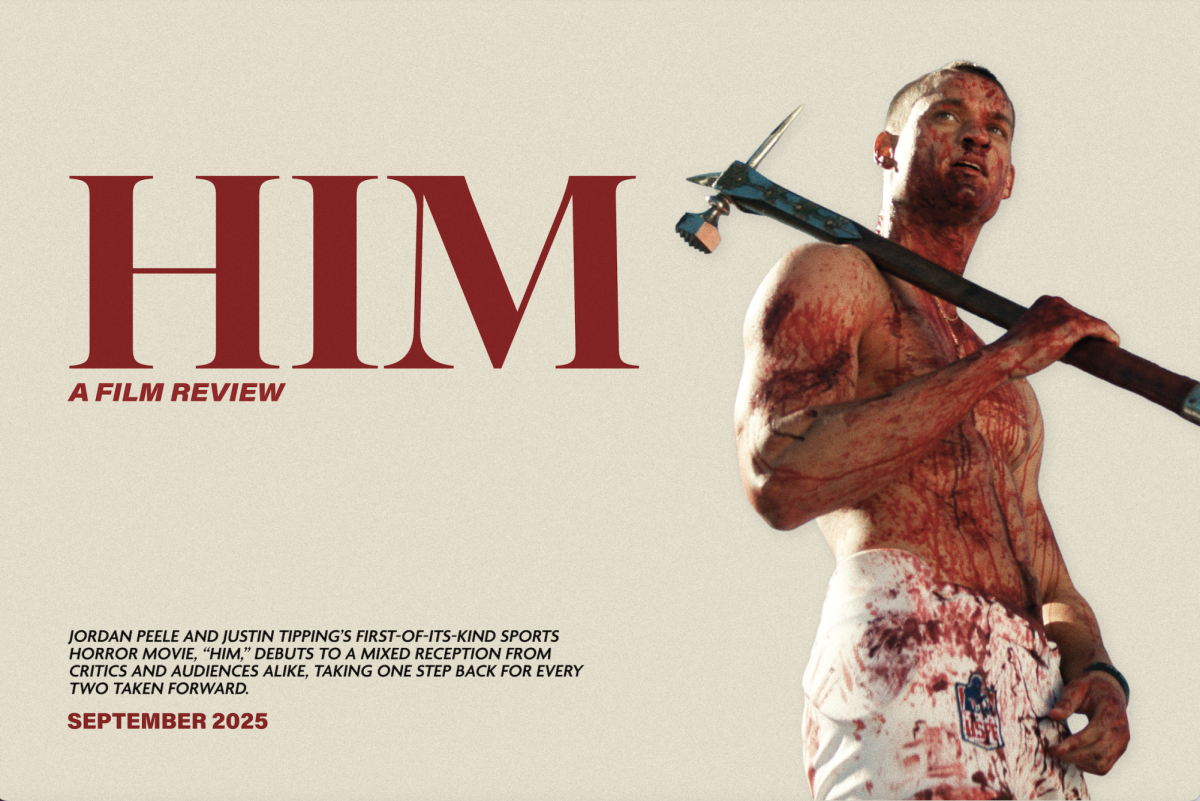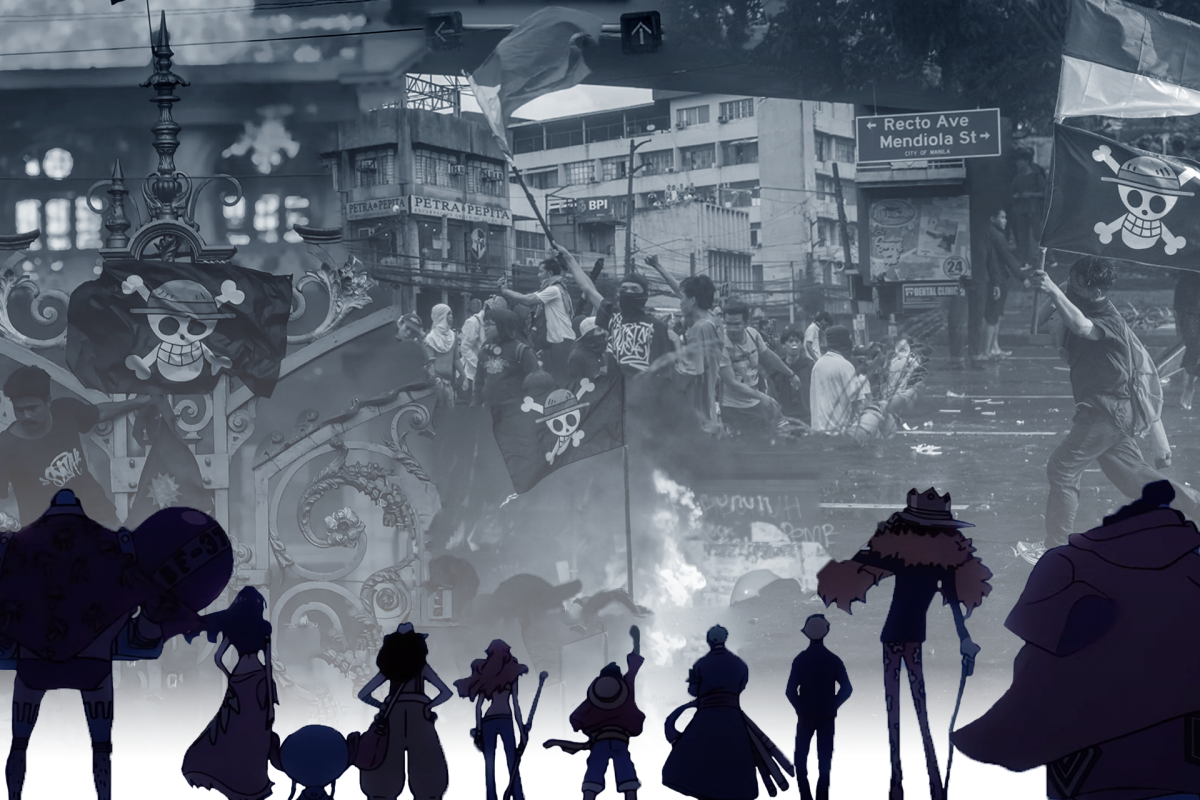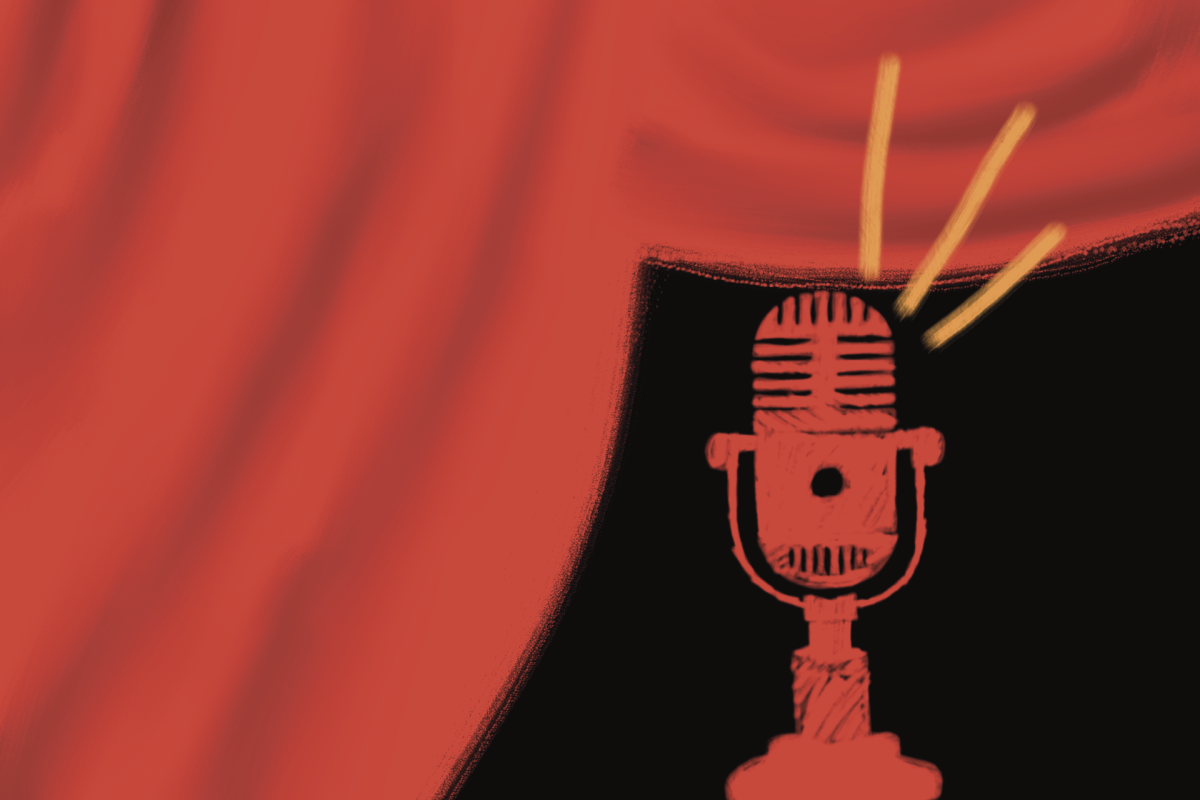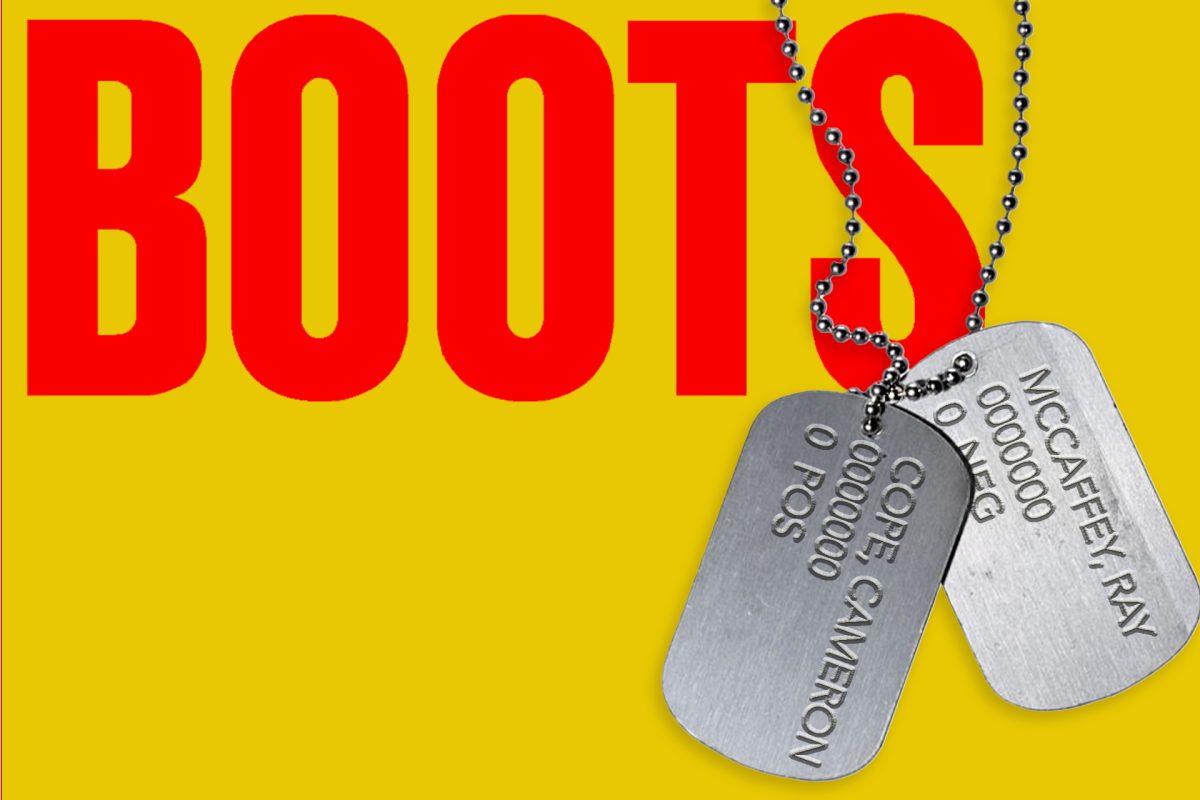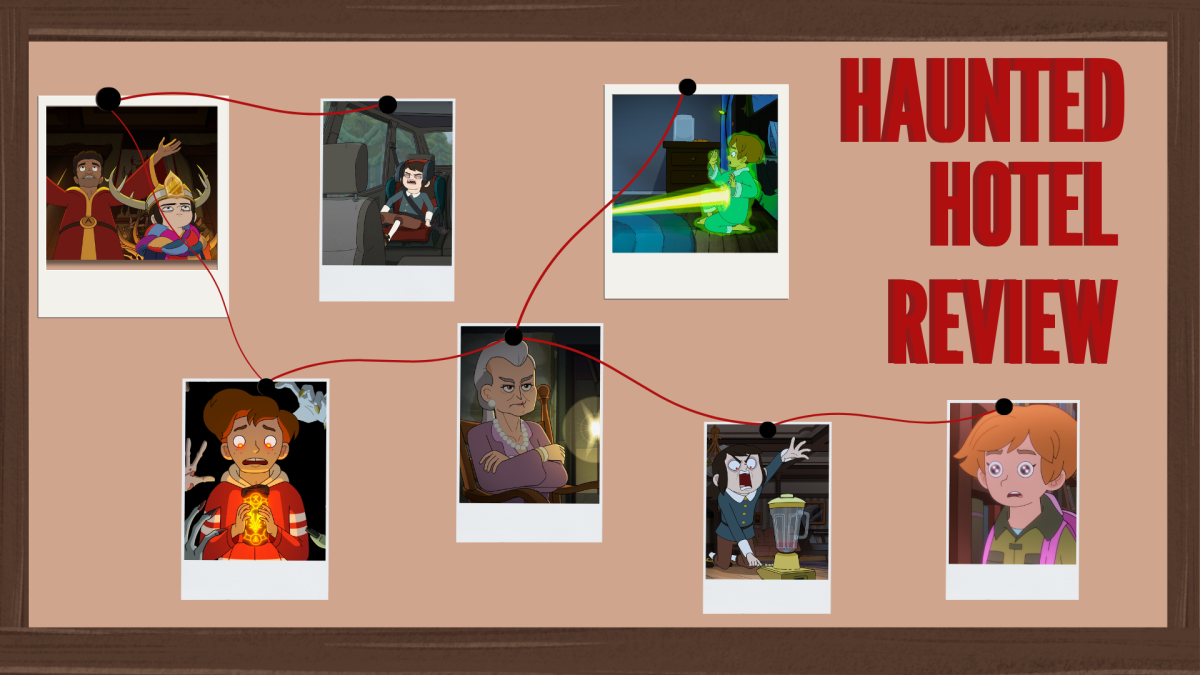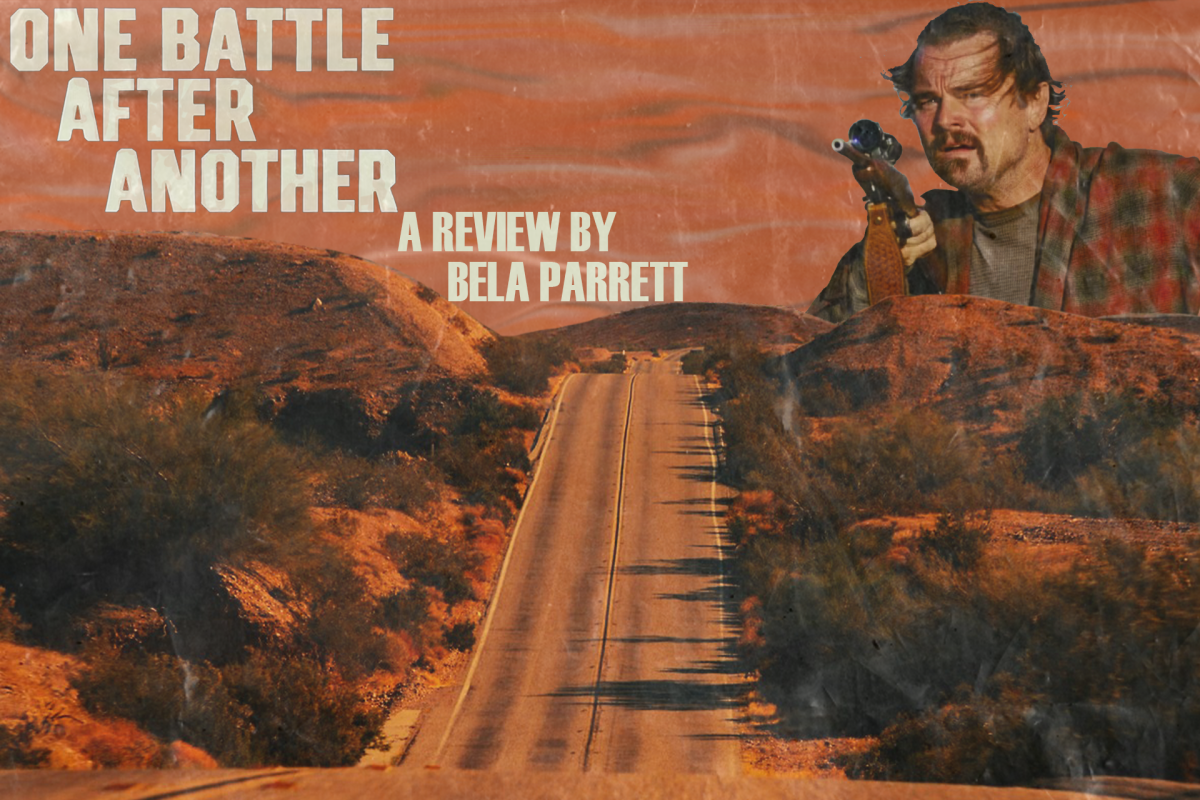Let’s not mince words — from the moment I saw the first trailer for Jordan Peele and Justin Tipping’s new movie, “Him,” on April 18, I knew this movie was going to be my most anticipated release of the year.
A longtime fan of Peele, I’ve followed his career diligently, especially over the last few years, as the director has branched out into creating premier horror cinema. “Nope” was one of my personal favorite films of 2022, due in large part to Peele’s stylistic use of spiritual elements to create fear. So, sitting in the theatre and seeing the trailer for “Him,” I was ecstatic.
The movie follows the story of Cameron Cade, played by former Florida State wide receiver Tyriq Withers, who is an aspiring quarterback attempting to climb through the ranks of the draft and become the “GOAT,” or greatest of all time. This proves to be easier said than done, as Cade begins to question just how much he can really sacrifice for the game.
The film sets its tone early, with the very first scene showing a young Cade watching his team, the San Antonio Saviors, play for the championship. Things take a turn quickly, though, as the Saviors quarterback and personal hero to Cade, Isaiah White, played by Marlon Wayans, suffers a mutilating leg injury. Cade’s father makes his son watch as White is carried off the field, and he tells him, “Real men are willing to make sacrifices,” a mantra which is repeated several more times throughout the movie.
Here lies the first problem with this movie. To say that subtlety is not a strong suit of the film would have required there to be a single part which felt subdued. Its themes of toxic masculinity and the near-gladiatorial culture pushed by football don’t just linger in scenes — they paint the whole background.
Following the opening, a head injury forces Cade to sit out from the combine. This aloofness only creates more media buzz around the athlete, scoring him an invite to come train for a week with the Saviors under the tutelage of White himself. However, as the days go on, Cade realizes that dedication and sacrifice may not be enough to make it to the top.
Paranoia and hallucinations begin to torment the quarterback. They seem to lurk around every corner of the training compound, a Brutalist-inspired concrete labyrinth designed to create feelings of fear and isolation.
This is where audiences get into one of the best parts of the whole film: all of its auxiliary elements. The color scheme, the set design, the cinematography — they all show up in full force here. Having been filmed in New Mexico, the burnt reds and oranges of the movie create an excellent pop of color against the otherwise devoid shades of gray.
The film also experiments with a wide variety of shooting and editing styles, constantly changing the tempo as a way to avoid stagnation. Some of these shots are incredibly effective, like the X-ray scenes, which are reminiscent of a Mortal Kombat fatality. Others, like the third act’s party scene, are just too muddy and unfocused to really resonate with audiences.
That’s the biggest problem with this movie. For every genuinely interesting idea that is introduced, another half-baked one pulls focus. It is interesting to imagine how many of the final story elements were squeezed in the original speculative script written by Zack Akers. It could also be the fault of rookie director Tipping simply trying to juggle too many elements. Advertising may have played a role as well, with all the trailers making sure audiences knew Peele was associated with the movie.
Going into this movie and finding out that Peele’s only involvement was an executive producer credit, I was worried that the film would feel out of place among the rest of his production company, Monkeypaw. While parts of this movie feel like a “Jordan Peele horror movie,” I would wager that those are my least favorite parts. Specifically, the masked creatures which follow Cade around throughout the film felt completely juvenile in an otherwise serious movie. Their costume design is so silly and out of place I mistook them for “Don’t Hug Me I’m Scared” characters a few times. (Just for the editors)
At its heart, though, this movie does deliver powerful performances from its small cast. Withers and Wayans deliver a masterclass in intensive shout acting. Their chemistry throughout the movie is electric, particularly Wayans, whose horrifying mentor role is an excellent contrast to Withers’ innocence throughout the film. Jim Jefferies is also wonderfully strange in his support role as White’s physician, giving the movie a few moments of much-needed comic relief.
The film is rounded out by a fantastic soundtrack from composer Bobby Krlic. The mix of strings and traditional orchestral vocals work together to create a hauntingly gothic sound to underscore the film. Even outside of Krlic’s original work, contributions from hip-hop artists like Denzel Curry, Larry June and Gucci Mane create a killer score that has earned several spots in my daily playlists.
Overall, there is so much about this movie to fall in love with if you let yourself. Certain elements definitely fall flat or feel half-baked, but none of them are important enough to ruin the movie as a whole. As a Peele movie, it’s below par. But as the first real Tipping movie, it’s a unique and fascinating film that shows lots of promise for the future. It is definitely not the movie of the year, but the film delivers on an interesting concept.
Edited by Mikalah Owens | [email protected]
Copy Edited by Jayne Hornich and Avery Copeland | [email protected]
Edited by Maya Bensaoud | [email protected]
Edited by Alex Gribb | [email protected]


